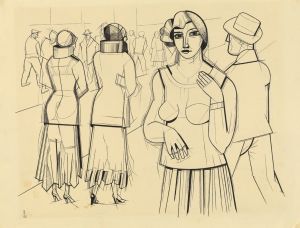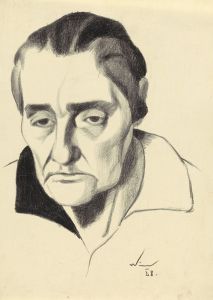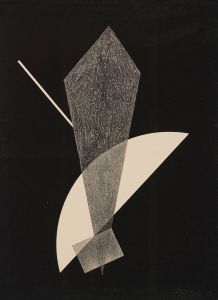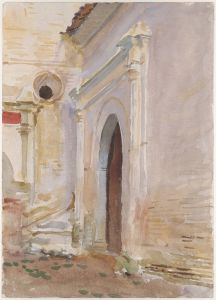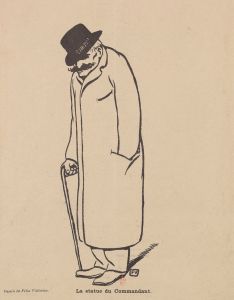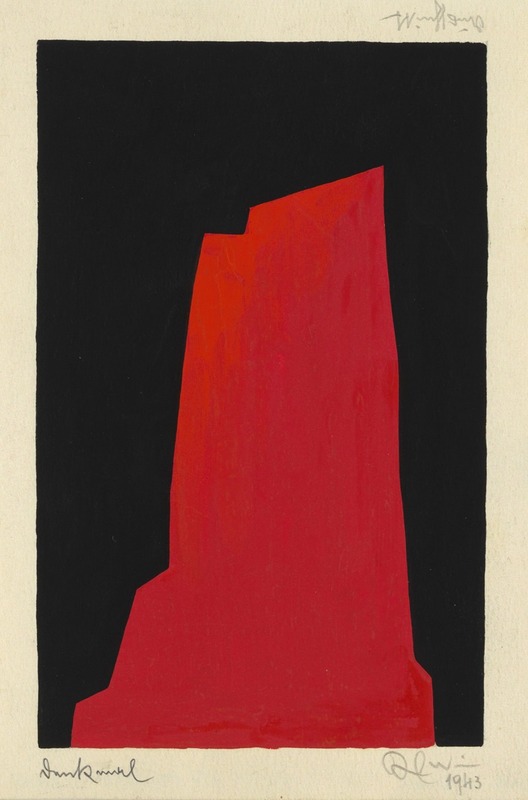
Denkmal
A hand-painted replica of Karl Wiener’s masterpiece Denkmal, meticulously crafted by professional artists to capture the true essence of the original. Each piece is created with museum-quality canvas and rare mineral pigments, carefully painted by experienced artists with delicate brushstrokes and rich, layered colors to perfectly recreate the texture of the original artwork. Unlike machine-printed reproductions, this hand-painted version brings the painting to life, infused with the artist’s emotions and skill in every stroke. Whether for personal collection or home decoration, it instantly elevates the artistic atmosphere of any space.
Karl Wiener was an Austrian artist known for his contributions to the art world during the early to mid-20th century. One of his notable works is the painting titled "Denkmal." This painting, like many of Wiener's works, reflects his unique style and artistic vision.
Karl Wiener was born in 1891 in Vienna, Austria. He studied at the Academy of Fine Arts in Vienna, where he developed his skills and began to establish his reputation as an artist. Wiener's work was influenced by the various art movements of his time, including Expressionism and New Objectivity, which were prominent in Europe during the early 20th century.
"Denkmal," which translates to "Monument" in English, is a significant piece in Wiener's oeuvre. The painting is known for its striking composition and the use of bold colors. It depicts a monumental structure, which could be interpreted as a symbol of memory or commemoration. The exact date of the painting is not well-documented, but it is believed to have been created during the interwar period, a time when Wiener was actively producing art.
The painting showcases Wiener's ability to blend realism with abstract elements, creating a powerful visual impact. The monument in the painting is rendered with a sense of solidity and permanence, yet there are abstract qualities that suggest a deeper, more complex meaning. This duality is a hallmark of Wiener's work, as he often sought to convey both the tangible and the intangible aspects of his subjects.
Karl Wiener's career was marked by both success and challenges. He exhibited his work in various galleries and received recognition for his artistic contributions. However, like many artists of his time, he faced difficulties during the political upheavals of the 20th century. The rise of the Nazi regime and the subsequent impact on the art community in Europe affected many artists, including Wiener.
Despite these challenges, Wiener's work continued to be appreciated by art enthusiasts and collectors. His paintings, including "Denkmal," are held in high regard for their artistic merit and historical significance. Wiener's ability to capture the essence of his subjects, combined with his innovative use of color and form, has ensured his place in the annals of art history.
Karl Wiener passed away in 1958, but his legacy lives on through his art. "Denkmal" remains an important work that exemplifies his talent and vision. It serves as a testament to his ability to create art that resonates with viewers and provokes thought and reflection.
In summary, "Denkmal" by Karl Wiener is a notable painting that reflects the artist's unique style and his ability to convey complex themes through his work. Wiener's contributions to the art world continue to be celebrated, and his paintings remain a significant part of art history.











